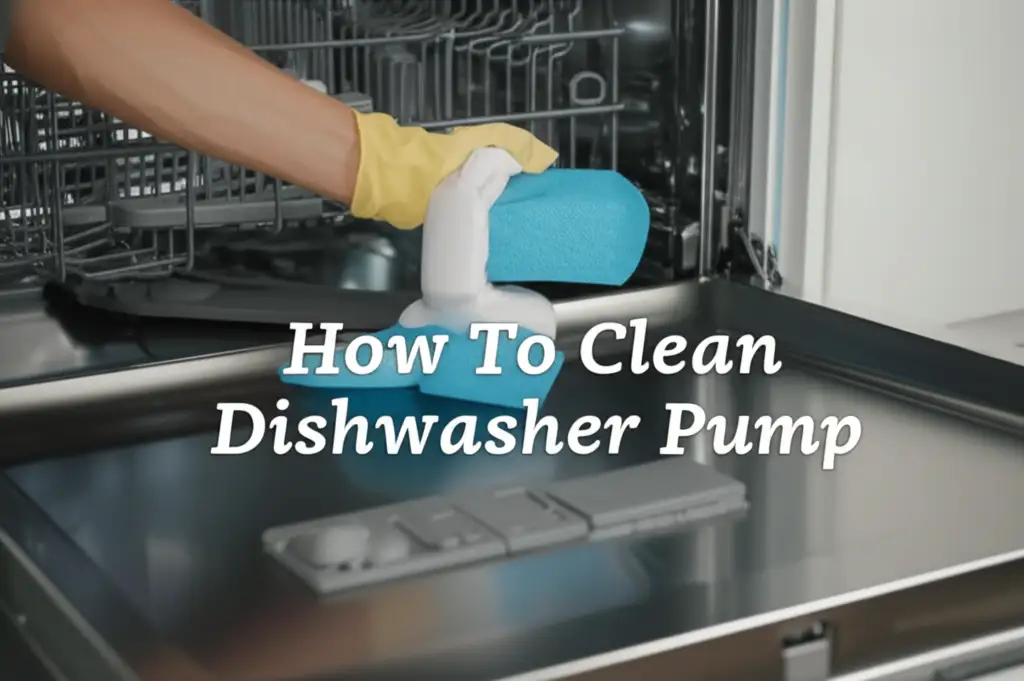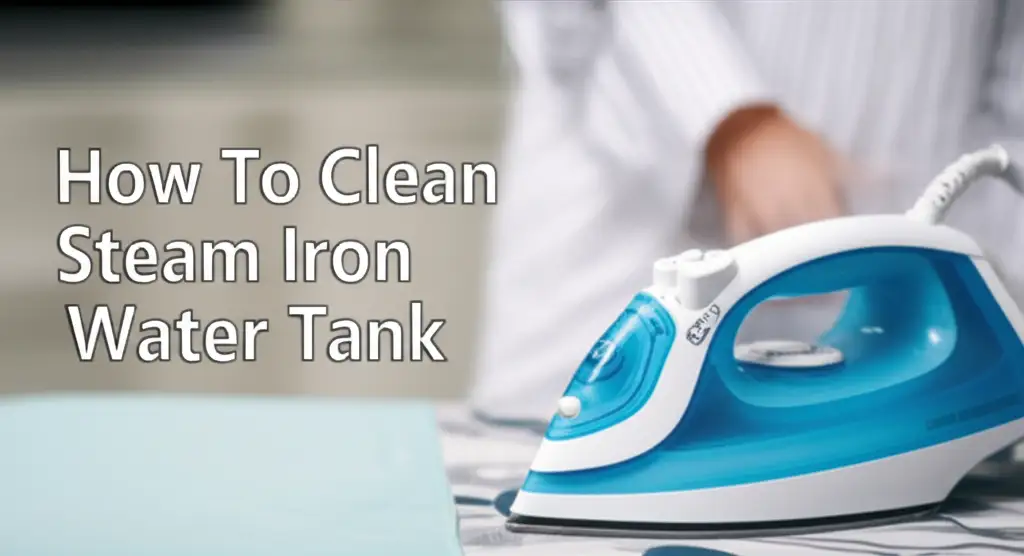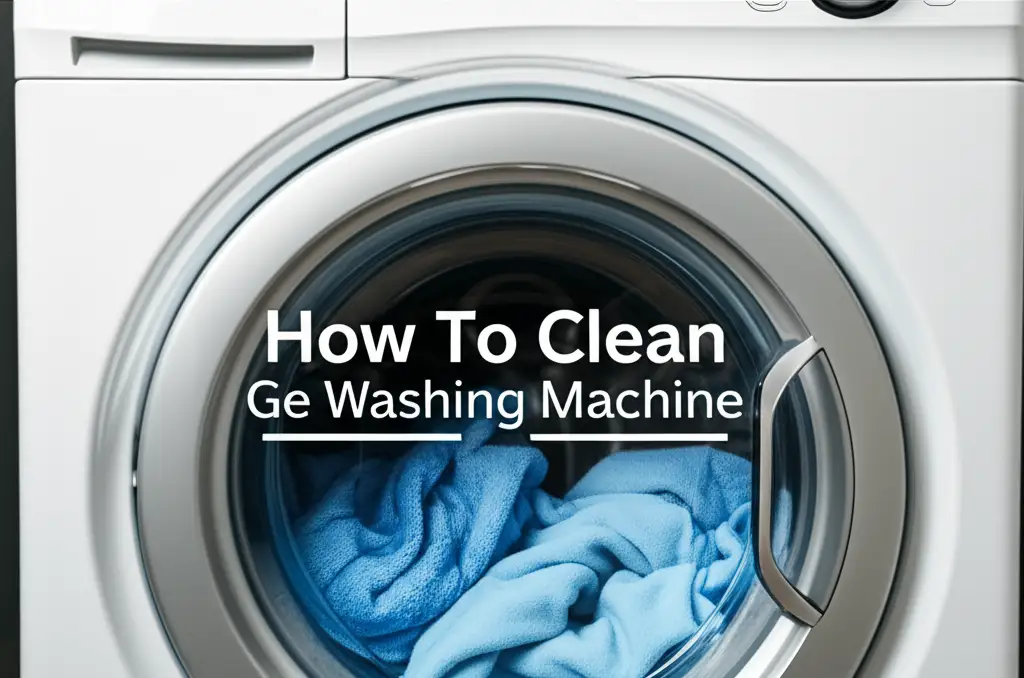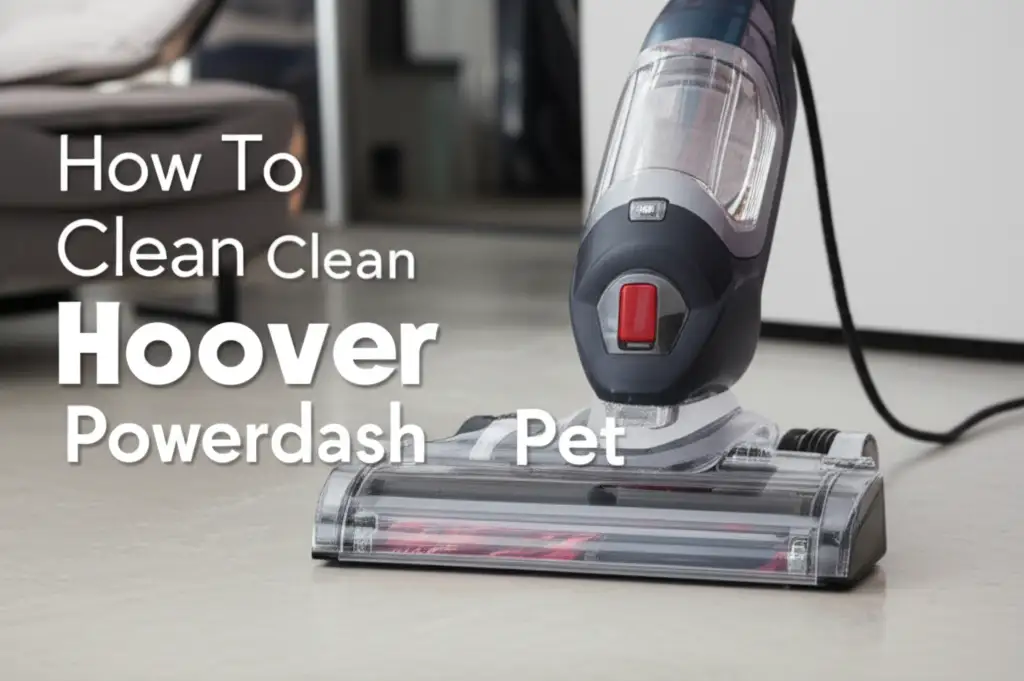· Appliance Care · 16 min read
How To Clean Dishwasher Pump

Restore Your Dishwasher’s Power: How To Clean Dishwasher Pump
Is your dishwasher leaving dishes dirty? Does it smell bad or fail to drain? A clogged dishwasher pump often causes these problems. Many people overlook this critical component. Cleaning the pump helps your dishwasher work better. It also extends its life.
I know the frustration of a poorly performing dishwasher. You expect clean dishes, but you get grimy ones. The good news is you can fix many common issues yourself. This guide will show you how to clean dishwasher pump components step-by-step. We will cover everything from safety precautions to reassembly. You will learn the right tools to use and how to spot common problems. This article empowers you to restore your appliance’s efficiency. You will improve your kitchen’s cleanliness.
Takeaway
Cleaning your dishwasher pump is a critical maintenance task. It restores appliance performance and prevents costly repairs.
- Safety First: Always disconnect power and water before you begin.
- Locate Components: Identify the filter, sump, drain, and circulation pumps.
- Remove Debris: Clear food particles, grease, and other blockages from all accessible areas.
- Deep Clean: Use brushes and cleaning solutions for stubborn grime.
- Prevent Future Issues: Regular cleaning and proper dish scraping help maintain pump health.
Clear Answer to the Main Query
To effectively clean your dishwasher pump, first disconnect power and water. Then, access the pump area by removing racks and the lower spray arm. Unscrew or unclip the filter and sump covers. Manually remove large debris. Use a brush and mild detergent solution to scrub the impeller and pump housing.
Why Your Dishwasher Pump Needs Cleaning: Common Symptoms and Benefits
Your dishwasher’s pump is its workhorse. It moves water through the spray arms during the wash cycle. It also pushes dirty water out during the drain cycle. Over time, food particles, grease, and hard water minerals build up. This buildup clogs the pump. A clogged pump cannot do its job well. This leads to many common dishwasher problems.
I have seen many dishwashers struggle because of a neglected pump. You might notice dishes are not getting clean. They may have a gritty residue or streaks. This is often because water flow is weak. Another common sign is poor drainage. Water might sit at the bottom of the tub after a cycle. A loud humming or buzzing sound during operation also suggests pump strain. Sometimes, the dishwasher might stop mid-cycle. This happens if the pump motor overheats from blockages. Ignoring these signs can damage the pump or motor permanently. This leads to expensive repairs or even replacing the appliance.
Cleaning the dishwasher pump offers many benefits. First, it restores powerful water circulation. This ensures your dishes get a thorough wash. Second, it improves drainage. This prevents foul odors from stagnant water. You can learn more about how to clean a dishwasher drain to ensure a complete flow. Third, it reduces noise during operation. A clean pump runs smoothly. Fourth, regular cleaning extends the life of your dishwasher. It reduces wear and tear on critical parts. It also keeps your dishwasher smelling fresh. Sludge and food debris are common causes of bad smells. You can prevent bad odors by learning how to clean sludge from dishwasher effectively. Finally, it saves you money on energy bills. An efficient pump uses less energy. Keeping your pump clean is a smart way to maintain your home.
Gathering Your Tools: What You’ll Need for the Task
Before you begin to clean dishwasher pump components, gather all necessary tools. Having everything ready saves time. It makes the cleaning process smoother. You do not want to stop halfway to find a screwdriver. I always recommend laying out my tools first. This helps me organize my thoughts too.
You will need basic household items. A pair of rubber gloves protects your hands. Dishwashers can be dirty inside. They might contain sharp objects like broken glass. Safety glasses are also a good idea. Sometimes debris can splash during cleaning. A few towels or old rags are essential. You will use them to soak up any spills. They also help wipe down parts. A small bucket or shallow pan is useful. It collects any water remaining in the sump area. I also suggest a flashlight. Dishwasher interiors are dark. A good light helps you see small components. It also helps you spot hidden debris.
For actual cleaning, you will need a few specific items. A soft-bristled brush, like an old toothbrush, works well. It cleans tight spaces. A pipe cleaner or a flexible brush can also help. These reach deeper into hoses or narrow openings. Small pliers are useful for gripping stubborn clamps. A screwdriver set, both Phillips and flathead, is often necessary. Different dishwasher models use various fasteners. A mild dish soap mixed with warm water creates a safe cleaning solution. For tougher buildup, a vinegar solution can be effective. You can also learn how to clean a dishwasher with vinegar for general maintenance. Having these items on hand ensures you are prepared for any situation.
Safety First: Preparing Your Dishwasher for Cleaning
Safety is the most important step before you clean dishwasher pump parts. Working with appliances requires caution. You are dealing with electricity and water. Ignoring safety steps can lead to injury. It can also damage your appliance. I always start with safety checks. This gives me peace of mind.
First, you must disconnect the dishwasher’s power supply. This is crucial. Find your home’s circuit breaker box. Locate the breaker labeled for your kitchen or dishwasher. Flip it to the “off” position. If your dishwasher plugs into an outlet, simply unplug it. Do not rely on turning the dishwasher off at the control panel. This does not fully cut power. I always test the appliance. Try to turn it on after cutting power. This confirms the power is truly off.
Next, turn off the water supply to the dishwasher. Look for the water shut-off valve. It is usually under your kitchen sink. It connects to the dishwasher’s water line. Turn the valve clockwise until it is fully closed. This prevents water from flowing into the appliance. After turning off the water, open the dishwasher door. You may see some standing water in the bottom. This is normal. Have your towels and bucket ready. You will need to remove this water before proceeding. I often use a cup or small scoop to remove most of the water. Then, I use towels to soak up the rest. This makes the workspace dry and safe. These preparatory steps ensure you work in a safe environment.
Accessing the Dishwasher Pump: Step-by-Step Guide
Once your dishwasher is safe, you can access the pump. The pump is located at the bottom of the dishwasher tub. It is usually hidden under a few layers. The design might vary slightly by model. However, the general steps remain similar. I find it helpful to take pictures. These help me remember how parts fit back together.
First, remove the lower dish rack. This gives you clear access to the bottom of the tub. Simply slide it out completely. Some models might have an upper rack that also needs removing. Next, locate the lower spray arm. This arm usually twists off or unclips. Turn it counter-clockwise to loosen it. Lift it straight up once it is loose. Set it aside carefully. Be gentle with plastic parts. They can become brittle over time.
Below the spray arm, you will see the filter assembly and the sump area. The filter usually has two parts. There is a coarse filter and a fine mesh filter. Twist or unclip the coarse filter first. Then, lift out the fine mesh filter. Refer to your dishwasher’s manual if you have trouble. This part is crucial for keeping large food particles out of the pump. Many blockages happen here. After removing the filters, you will see a round cover or screen. This is the entrance to the sump area. The sump area houses the pump impeller. You might need a screwdriver to remove this cover. There may be a few screws holding it in place. Carefully lift the cover. Now, you can see the impeller and the pump housing. You are ready to clean the dishwasher pump. Remember that proper filter cleaning can prevent many pump issues. Learn how to clean the filter in a dishwasher as part of your routine.
Cleaning the Dishwasher Pump Impeller and Housing
Now you have access to the pump. This is where most of the cleaning takes place. The impeller is a small fan-like blade. It spins to move water. The housing is the chamber around it. Both can get very dirty. I recommend wearing gloves for this part. You will encounter slimy, greasy buildup.
First, visually inspect the impeller area. Look for any large debris. You might find food scraps, broken glass, or even small bones. These items cause clogs. Carefully remove all visible foreign objects. Use your fingers or pliers for stubborn items. Be very careful with glass. Ensure you get everything out. Even small pieces can cause future problems. This step is often the most impactful. Removing a large piece of plastic or a seed pod can immediately restore function.
Next, focus on the grime. The impeller blades and the inside of the housing can have a thick layer of grease and food residue. Use a small, stiff brush. An old toothbrush works perfectly here. Dip your brush in a mixture of warm water and mild dish soap. Scrub all surfaces vigorously. Pay close attention to the spaces between the impeller blades. These areas trap a lot of gunk. Rinse the brush frequently. You may need to repeat this process several times. For tough mineral deposits or slimy black buildup, a vinegar solution helps. You might find that cleaning black stuff in your dishwasher improves overall hygiene and function. Apply the vinegar solution directly. Let it sit for a few minutes. Then, scrub again. This helps break down stubborn grime. Ensure all visible debris and slime are gone. The impeller should spin freely when you gently push it with your finger.
Addressing Clogs: Drain and Circulation Pump Care
Cleaning the main impeller is a good start. However, your dishwasher has two main pump types: the circulation pump and the drain pump. Both can experience clogs. A full cleaning involves checking both. If your dishwasher struggles with draining, the drain pump is likely the culprit. If dishes are dirty, the circulation pump may be affected. I always inspect both during a deep clean.
The drain pump is responsible for expelling dirty water. It typically sits below the circulation pump or near the base. Accessing it might require tilting the dishwasher or pulling it out from under the counter. This can be a more complex step. You might need to detach some hoses. Look for the main drain hose. It connects to the pump. Check inside the hose for blockages. Use a flexible brush or snake tool to clear any obstructions. Food debris, grease, and even bits of plastic can get lodged here. Some drain pumps have an access port. This port lets you clear the impeller directly. Refer to your owner’s manual for its exact location and removal instructions. Ensure the drain hose itself is not kinked. A simple kink can prevent proper drainage.
The circulation pump moves water to the spray arms. This pump is usually connected to the main motor. It is typically more difficult to access fully without disassembling the appliance. However, cleaning the visible impeller and housing, as described earlier, addresses most circulation pump issues. The main problem often comes from debris reaching it. If the filters are clean, most large particles do not reach the circulation pump. You can check the hoses connected to the spray arms. These might also have some buildup. Use a pipe cleaner to clear them. Also, inspect the spray arms themselves. Their tiny holes can get clogged. Puncture these holes with a toothpick. Ensuring clear water flow from both pumps is vital for a spotless wash. Cleaning stubborn calcium buildup in your dishwasher can also improve overall pump efficiency and extend its life.
Reassembly and Testing: Getting Your Dishwasher Back in Action
After thoroughly cleaning your dishwasher pump components, it is time for reassembly. Putting everything back correctly ensures your dishwasher works properly. It also prevents leaks. I find this part satisfying. It means the hard work is almost done. Take your time. Double-check each connection.
Start by placing the sump cover back in position. Ensure it aligns correctly. Tighten any screws you removed earlier. Do not overtighten. Plastic parts can crack. Next, reinsert the fine mesh filter. Then, place the coarse filter on top. Twist it into place until it locks. Make sure both filters sit flush. A poorly seated filter allows debris to pass. This can clog your newly cleaned pump quickly.
Now, reattach the lower spray arm. Twist it clockwise or clip it back into place. Give it a gentle spin to confirm it moves freely. It should spin without resistance. Then, slide the lower dish rack back into position. Ensure it glides smoothly on its tracks. Before restoring power, double-check all connections you touched. Make sure hoses are secure if you disconnected any. Ensure your hands are dry. Then, turn the water supply back on. Slowly open the valve under the sink. Check for any immediate leaks. Finally, go to your circuit breaker box. Flip the dishwasher breaker back to the “on” position.
Run a test cycle. I recommend a short, empty cycle with no detergent. Listen for unusual noises. Look for proper drainage. Water should circulate strongly through the spray arms. The bottom of the tub should be completely dry at the end. If you notice any issues, stop the cycle. Recheck your work. Sometimes, a part is not seated correctly. A successful test run means your dishwasher is ready. It will now deliver clean dishes.
Preventative Maintenance: Keeping Your Dishwasher Pump Clean
Cleaning the dishwasher pump is a big job. You do not want to do it too often. Regular preventative maintenance helps keep your pump clean. It extends the time between deep cleans. Simple habits can make a huge difference. I always advise my friends to adopt these practices. They save time and money in the long run.
First, always scrape off large food particles from dishes before loading them. Your dishwasher is not a garbage disposal. While it can handle small bits, larger pieces clog filters and pumps. Scrape plates into the trash. Rinse heavily soiled items if necessary. This simple step prevents a lot of problems. It reduces the amount of debris entering the pump system.
Second, regularly clean your dishwasher’s filters. The filters catch most of the food debris. If they are full, debris overflows into the pump. Check your filters at least once a month. Some people do it once a week. Remove the coarse and fine mesh filters. Rinse them under warm running water. Use a soft brush to scrub away any stuck-on food or grease. This is a quick and easy task. It prevents many future clogs. You might be surprised how much food gets trapped.
Third, run cleaning cycles regularly. Use a dishwasher cleaner specifically designed for appliances. Alternatively, you can use natural solutions. A cup of white vinegar placed in a bowl on the top rack works wonders. Run a hot water cycle. Vinegar helps dissolve grease and mineral buildup. You can also sprinkle baking soda on the bottom of the tub. This helps absorb odors. Running an empty cycle with vinegar and baking soda once a month helps maintain overall cleanliness. This keeps the hoses, sump, and pump clearer. This routine helps prevent grime from accumulating. It keeps your dishwasher fresh. It ensures your pump stays healthy.
FAQ Section
How often should I clean my dishwasher pump?
You should deep clean your dishwasher pump every 6-12 months. This depends on usage and how well you pre-rinse dishes. If you notice issues like poor drainage or dirty dishes, clean it sooner. Regular filter cleaning helps extend the time between pump cleanings.
Can a clogged dishwasher pump cause leaks?
Yes, a severely clogged dishwasher pump can cause leaks. When the pump is blocked, water may not drain properly. This can lead to water backing up. Pressure can build, forcing water out of seals or hoses. It can also damage the pump, causing internal leaks.
What are the signs of a failing dishwasher pump, not just a clogged one?
Signs of a failing pump include loud grinding or humming noises, especially if they are new sounds. The dishwasher might not drain at all, or water might remain stagnant after cycles. If the motor struggles, you might smell burning. These issues often mean the pump motor itself is failing, not just a clog.
Can I use harsh chemicals to clean my dishwasher pump?
No, do not use harsh chemicals like bleach or strong degreasers. These can damage plastic and rubber components inside your dishwasher. They can also corrode metal parts. Stick to mild dish soap, white vinegar, or specialized dishwasher cleaners.
Is cleaning the dishwasher pump a DIY task, or do I need a professional?
Cleaning the dishwasher pump is often a DIY task. Most homeowners can do it with basic tools and instructions. However, if you are uncomfortable with appliance disassembly, or if the pump still malfunctions after cleaning, consider calling a professional technician.
What is the difference between a drain pump and a circulation pump?
The drain pump moves dirty water out of the dishwasher at the end of a cycle. The circulation pump circulates clean water through the spray arms during the wash cycle. Both are essential for proper dishwasher operation. Both can be affected by debris.
Conclusion
A well-functioning dishwasher is a cornerstone of a clean kitchen. Knowing how to clean dishwasher pump components empowers you. It helps you tackle common appliance problems. We have covered the importance of pump health. We have gone through the necessary tools. We have also detailed the safety steps. You now know how to access and clean the impeller and housing. We also discussed how to address clogs in both drain and circulation pumps. Finally, we learned how to reassemble your appliance and implement preventative measures.
I assure you, taking these steps will transform your dishwasher’s performance. You will enjoy spotlessly clean dishes. You will eliminate unpleasant odors. You will also extend the life of your valuable appliance. This DIY task saves you money on service calls. It reduces the need for premature appliance replacement. Do not let a clogged pump ruin your dishwashing experience. Take action today. Dedicate some time to this essential maintenance. Your dishwasher will thank you. Regular care ensures your appliance remains efficient and reliable for years. Start your cleaning journey now. Your clean dishes await!
- dishwasher maintenance
- appliance cleaning
- clogged dishwasher




